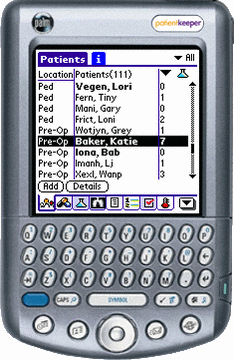Answer
Mastitis
neonatorum of the left breast, positive for
methicillin-resistant Staphylococcus aureus
(MRSA): On the basis of the patient's history,
physical findings, and laboratory data, the
healthcare team diagnosed mastitis neonatorum (acute
mastitis) with an underlying abscess. The abscess
was incised and drained, and the patient was treated
with antibiotics. On further questioning, the mother
and father both reported that they had recent
wounds, which were drained. Their cultures were
positive for MRSA. The patient's wound culture grew
MRSA that was sensitive to clindamycin but resistant
to erythromycin. A D-test demonstrated no inducible
clindamycin resistance; the patient was discharged
home with a 14-day regimen of clindamycin.
Mastitis neonatorum is an uncommon neonatal skin or
soft tissue infection of the breast. The condition
is most common in female babies, it occurs during
the first 4 weeks of life, and it is typically
unilateral. Causes of infection include contact with
an infected mother or other family members, infected
healthcare workers, or contaminated breast milk. The
most likely mechanism of entry is direct inoculation
through the skin, and the most common organism is S
aureus. Although S aureus is colonized
in approximately 40-90% of neonates by the age of 5
days, skin and soft tissue infections are relatively
infrequent. However, the increased prevalence of
community-acquired and nosocomial-acquired MRSA
appears to be raising the number of clinical
infections.
Abscesses should be drained, and appropriate
antibiotics may be needed. Evidence suggests that
isolated abscesses do not require antibiotic
treatment, though an antibiotic regimen is typically
recommended if surrounding cellulitis is present.
Cephalexin and erythromycin, which were previously
effective treatments, are becoming increasingly
unsuccessful in eradicating cellulitis. When
cultures are positive for MRSA infection, when
antibiotics fail in the setting of identified MRSA
resistance, or in areas where the prevalence of MRSA
is high, treatment should include a regimen known to
be successful against MRSA in that geographic
location. Commonly effective antibiotics include
clindamycin, trimethoprim-sulfamethoxazole, and
rifampin.
Although mastitis neonatorum rarely results in
serious bacterial infections, possible complications
include bacteremia, sepsis, and meningitis. A case
in the literature reports an infant with acute
mastitis and a subsequent brain abscess. Given the
increasing antibiotic-resistance patterns and the
relatively immature immune system of a neonate,
patients should be closely monitored for clinical
improvement.
|







 DISCLAIMER:
This website is designed primarily for use by qualified
physicians and other medical professionals. The
information provided here is for educational and
informational purposes only. It is not guaranteed to be
correct and should NOT be considered as a substitute for
the advice of an appropriately qualified expert. In no way
should the information on this site be considered as
offering advice on patient care decisions or establishment
of a patient-physician relationship.
DISCLAIMER:
This website is designed primarily for use by qualified
physicians and other medical professionals. The
information provided here is for educational and
informational purposes only. It is not guaranteed to be
correct and should NOT be considered as a substitute for
the advice of an appropriately qualified expert. In no way
should the information on this site be considered as
offering advice on patient care decisions or establishment
of a patient-physician relationship.